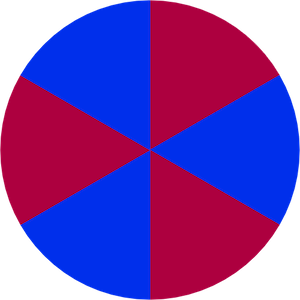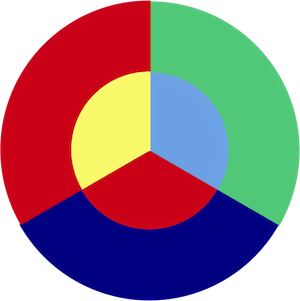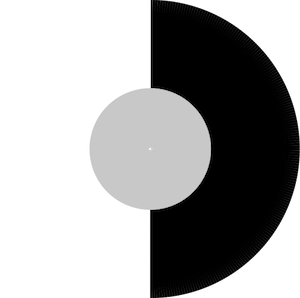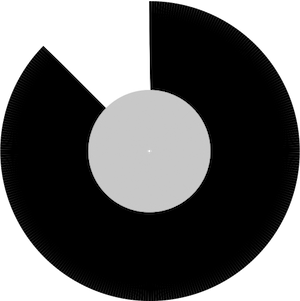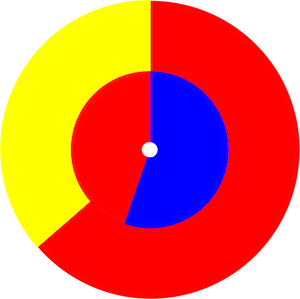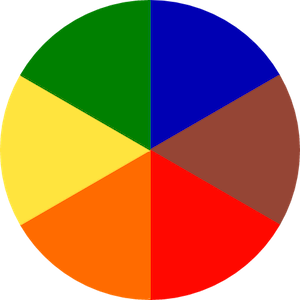
 What you can see: Colour spinning tops are both a popular children’s toy and an aid for teaching elements of colour theory, more precisely additive colour mixing. If the spinning tops reach a sufficiently high rotation speed, the colour segments of the disc (left) merge to form mixed colours (right) that are not visible when at rest.
What you can see: Colour spinning tops are both a popular children’s toy and an aid for teaching elements of colour theory, more precisely additive colour mixing. If the spinning tops reach a sufficiently high rotation speed, the colour segments of the disc (left) merge to form mixed colours (right) that are not visible when at rest.
 Such rotating disks have been experimented with for a long time.
Such rotating disks have been experimented with for a long time.
- In 1810, Goethe (1749-1832) described a flywheel with colored discs, on which the apparent mixture is produced through speed („auf welchem die scheinbare Mischung durch Schnelligkeit hervorgebracht wird“).
- In 1854, the physicist James Clark Maxwell (1831-1879) presented a colour spinning top with which he was able to produce a neutral grey from the colour sectors vermilion, ultramarine blue and emerald green.
- The Austrian writer Robert Musil (1880-1942) was also an engineer and developed the Musil color spinning top. This was a machine in which the proportion of two colored circle segments could be continuously adjusted and corresponding mixed colors were generated.
- Since 1923 – and until today – the Bauhaus Optical Colour Mixer has been distributed. It was designed by Hirschfeld-Mack (1893-1965) as a didactic toy.
- Manfred Adam and Gerhard Zeugner (1970) used comparison discs on spinning tops to calibrate colour cardboards (Bendin, 2016).
What can you do? There are 12 arrangements to choose from (1 ≤ no of disc ≤ 12), which are based on the templates mentioned above: Goethe (1 & 2), Maxwell (3), Bauhaus (4-7), Adam/Zeugner (8), and other colour combinations (9-12). You can switch back and forth between these arrangements using the up/down buttons.
The speed of rotation is adjusted with the tempo slider (-360 ≤ tempo ≤ 360). A fine adjustment of the rotation in steps of 0.25 can be made with the right/left buttons. Finally, the background colour can also be changed with the bg_color slider (0 ≤ bg_color ≤ 99). Try to create a still picture with the help of the tempo slider, then you can see the resulting mixed colors best.
A note on self-designed spinning tops: You can easily design your own colour combinations (saved as costumes) in Snap!’s Paint Editor.
Related topics: Duchamps Rotoreliefs, flicker colors
References:
Bendin, E. (2016). Beiträge zur Farbenlehre: Historischer Exkurs Farbkeisel. Modul 4/1. Edition bendin: Dresden. Available as download.

